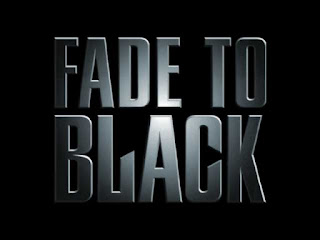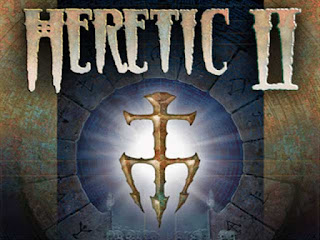The Future Is About To Become History
The legendary sword Excalibur has been stolen by raiders from the far future. As Merlin's apprentice, you are sent forward in time, equipped only with a broadsword and limited spellcasting ability. Your mission: recover Excalibur and prevent catastrophe.
- Over 300 different locations with more than 50 different characters.
- Fiendish puzzles.
- Full speech for all characters.
- Atmospheric sound and full CD audio.
- Enhanced lighting and resolutions for the 3Dfx graphics accelerator.
~ from the back of the box
There's something about the wild west of 90s game development that fascinate me. As designers were playing about with what they could do in 3D, we got some interesting misfires among the trash and treasures. Made with the PlayStation in mind, Excalibur 2555 A.D. is one such creative misfire that still manages to suck me in regardless.
In the far-flung future, nefarious looters have travelled back in time to steal the legendary sword. Merlin, in his infinite wisdom, sends his apprentice, Beth, into the future to retrieve it. It's a premise that tenuously sits with the gameplay itself as the future looks very much like a version of medieval England than anything like a sci-fi landscape. The plot, however, is just window dressing to a janky yet functional gameplay style.
The NPCs in this world lose the most random and innocuous things.
Throughout the 13 levels, Beth will navigate an underground labyrinth to reach the pre-determined exit. You'll mostly be hunting for keys to unlock doors, but there are the occasional fetch-quests too. NPCs scatter the terrain offering up a character minimal as their polygon count, but this means they get to the point a lot quicker. "Bring me a med kit", one will say. "Give me grog" barks another. In exchange, they'll give you something else to trade for something else which will probably be a key or key-like object. The result is a game that's more about noticing random objects lying on the floor than any kind of puzzle solving.
That's not to say there aren't any puzzles whatsoever. Switches are to be manipulated to find that new area holding some parchment, or must be pressed in the right order to unlock that room with an empty pouch and a dead rat. When there's a specific sequence, the answer is usually found within the environment. For example, the route to take on a floor of switches is found on a texture elsewhere in the level. Or perhaps the order of those numbered ones is found on a random piece of paper you found. With stages that could comprise of up to 50 rooms - some of which are only there to house an enemy, a trap or nothing at all - there will be a lot of searching.
Combine two inventory items with its recipe page to create a spell (left).
Use it like you would an item to cast it (right).
If there's anything modern gamers will baulk at, it will be the combat. While ostensibly fought in real-time, there's a slow and methodical structure to it that almost feels turn-based. You hold the attack key (Ctrl by default) and Beth will hold her stance. The four cardinal directions (the arrow keys) will each perform a move. Right will swing your sword, left is a back swing while up will have her perform an overhead slice. Hold down to block. Time it well, and you could walk away from an encounter unharmed, but will the crazy amount of hits some foes can absorb it could test your patience. This is your only means of attack, so you'll be doing it often. You can hold down each attack to charge, but this just leaves you unarmed and defenceless. There are a couple of special moves to be discovered, with the only hint of it being random notes from Merlin talking about attack combinations but with how slow each animation plays out, I found it more trouble than its worth.
Being the apprentice to Merlin, you will get the opportunity to do magic. They're mainly used for puzzle solving such as casting the Spell of Fragmentation to free a character trapped under a collapsed wall. To cast it, you'll first have to find the spell page. It will detail the two ingredients you need to find in order to cast it. For instance, that Fragmentation spell will need a phoenix egg and a crystal before combining it with the spell page. Once combined, it will show up in your inventory as a glowing star item and used much like the many types of keys you'll frequently use.
Switches (left) and teleportation devices (right) make navigating the large stages entertainingly convoluted.
From a presentation standpoint, Excalibur is as bare as the bones of the skeletons you'll be fighting. It's a PlayStation port and it shows. You can imagine a PlayStation gamepad in your hands as you play, or an actual X-Box one as it wholly works with the game out of the box. This is the preferred way to play, though the keyboard is fully customisable if you want to go down that route. I did remove one of the intro cinematics - a logo for Fish (UK) Ltd who ported the game to Windows '95 - and replaced it with the actual opening movie. It's there on the CD, but I couldn't find out how to play it otherwise which I found bizarre.
Graphically, the chunky visuals grow on you, but the low draw distance and small, cramped rooms are very much below the curve for 1997. This was the year of Quake II, Tomb Raider II and MDK after all. The camera sits behind and slightly above the character which doesn't put you in a compromised position or obscure your view too often. At the press of a button, you can switch to a cinematic viewpoint aiming to emulate the Resident Evils or Silent Hills of this world, but this is a far worse way to play. The camera swings wildly, doing everything it can to disorient you in the cramped spaces. I only used it when I was curious to see what it would look like. Thankfully, the default view is much better so you won't miss it if you never use it.
All of this makes for a game that's better than its first impressions. Excalibur is no classic, but should you take up Beth's giant sword to challenge robot guards and giant scorpions you probably won't regret it.

To download the PC game, follow the link below. This custom installer exclusive to The Collection Chamber uses dgVoodoo to run on modern systems with with OGG-WinMM for CD Audio emulation. The presence of a real or virtual CD drive may be required to play. Manual included. Read the ChamberNotes.txt for more detailed information. Tested on Windows 10.
File Size: 309 Mb. Install Size: 360 Mb. Need help? Consult the Collection Chamber FAQ
Download
Excalibur 2555 A.D. is © Telstar Electronic Studios
Review, Cover Design and Installer created by me






























The graphics resemble Simon the Sorcerer 3D
ReplyDeleteI see it. Both are rather chunky.
Deletequote: "The presence of a real or virtual CD drive may be required to play". Maybe using DxWnd winmm proxy would kill this requirement? Recent computers often have no real CD drives...
ReplyDeleteThat's just a general note I've added for all native windows games. This one might not need it (hence the "may"), but as I have a drive present at all times it isn't obvious to me. My research and testing can only go so far. Should a user who has no CD-ROM drive comment otherwise, I will change it.
DeleteOh, I see. My computer has no CD drive and I can say that the game works also without.
DeleteThat's good news! I'll edit it the blurb. There was a point where I kept is as a bullet point in the FAQ but after a couple of games where it applied cropped up I decided to add it to each page going forward.
DeleteSo many memories! Never finished this game!
ReplyDeleteIt might be worth a go this time round!
DeleteThanks for sharing it but people who are using non genuine, cracked or pirated operating system, Mostly facing problems and after the bogus updates their issues may become complex. I also used windows 11 pro trail with many issues on weekly basis but when I activated it there's no more issue found. To fix it, I purchased license key from odosta store which I think is a Microsoft product reseller.
ReplyDelete